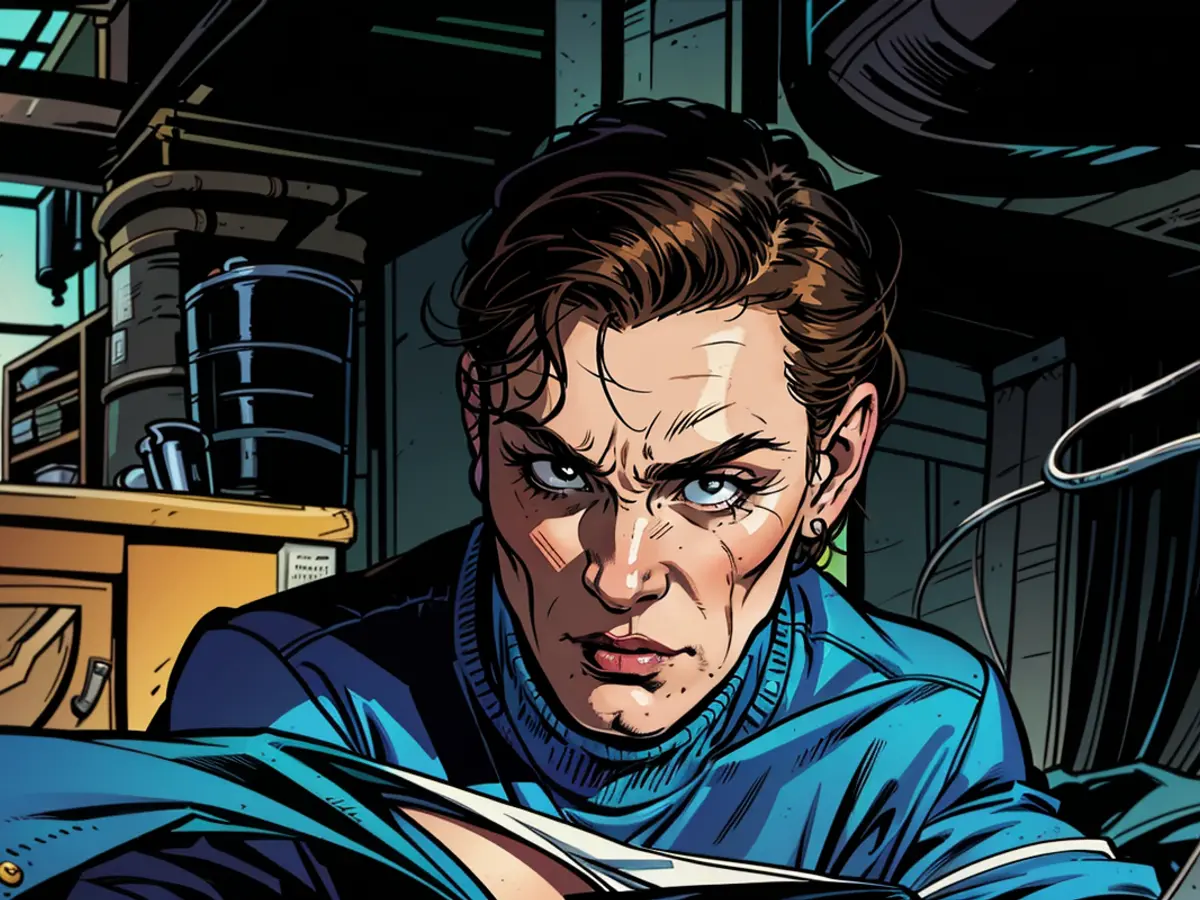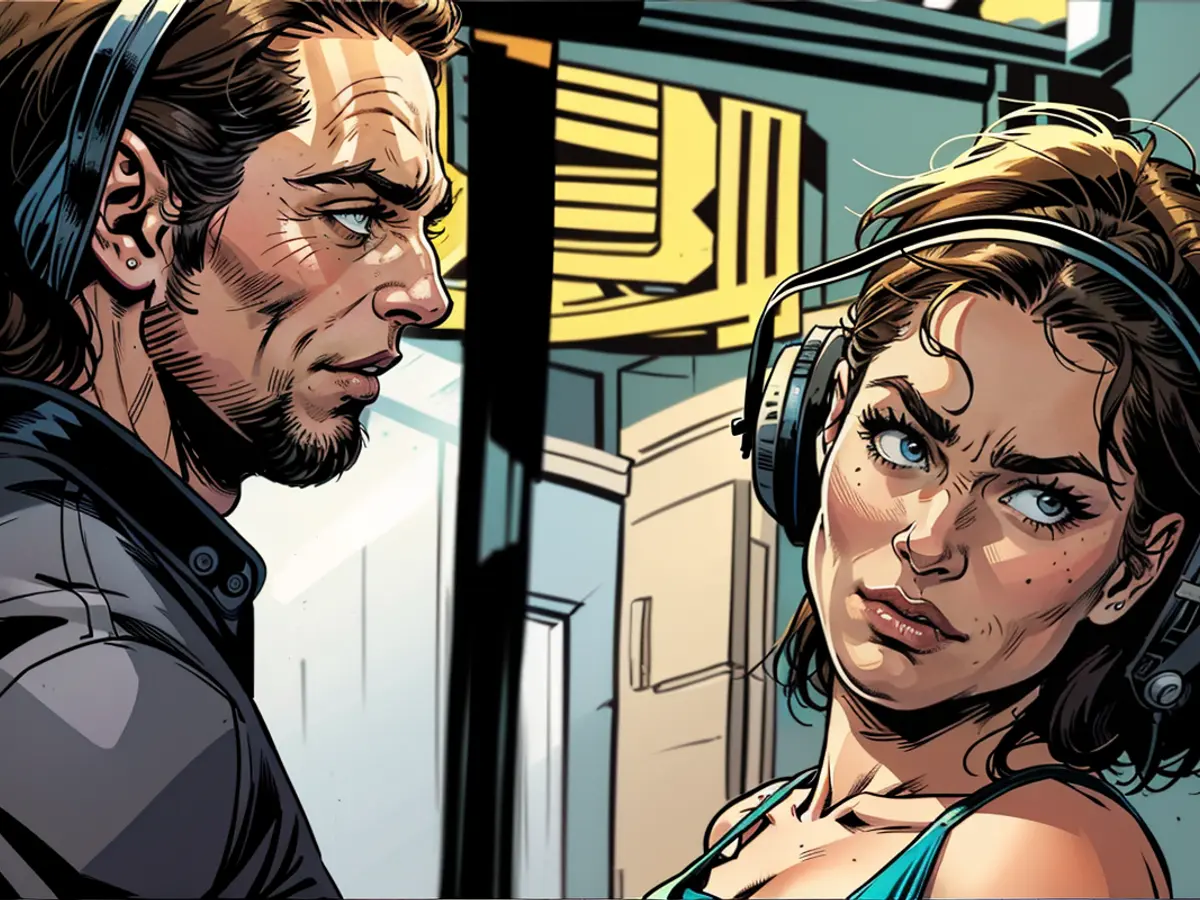Opinion: "Hit Man": Redefining the Illusion of the Femme Fatale
This week, Richard Linklater's "Hit Man" revisits the age-old charm of the femme fatale, but with a modern twist. Instead of purely leading men to their doom, the film suggests that both men and women can find more happiness and love when they step away from the outdated gender roles often portrayed in films like "Double Indemnity."
The femme fatale is a wild and seductive woman who lures men into ruin and destruction. This trope can be traced back to classic stories like that of the enchantress Circe, who turned men into pigs, or the Sirens, who lured sailors to their watery deaths.
FIrst introduced as an archetype in "Double Indemnity," Phyllis (played by Barbara Stanwyck) seduces Walter (Fred MacMurray), a respectable insurance salesman. She skillfully manipulates Walter into committing murder for monetary gain, only to fatally wound him when her true intentions are revealed. Despite Phyllis'n devious schemes, the movie portrays Walter's affection for her as a last resort to escape the temptations of this dangerous woman. He famously tells his boss'n boss, Keyes (Edward G. Robinson): "I love you," which represents the ultimate bonding between men as a means to escape the allure of femininity.
In the 1980s and 1990s, neo-noir filmmakers reinterpreted the concept of the femme fatale. They crafted stories where men and women both faced consequences for their respective roles in immoral activities, rejecting the notion that only women could be held responsible. In movies like "Body Heat," "Basic Instinct," "The Last Seduction," and "Gone Girl," these female characters plot and scheme with remarkable precision. The protagonist of "Wild Things," for example, shamelessly manipulates multiple characters just to survive.
Several recent films challenge the traditional femme fatale dynamic. "Anatomy of a Fall," directed by Justine Triet, leaves open whether the protagonist is truly guilty or not, deliberately playing with the audience's expectations about independent women. "Saltburn," created by Emerald Fennell, is a modern twist: the femme fatale is a bisexual, socially ambitious young man. The groundbreaking "Eileen" by William Oldroyd takes a different approach by swapping the gender of the femme fatale and innocent victim, ultimately revealing that the true evil wasn't the women involved, but the women who supported patriarchal violence.
"Hit Man" by Richard Linklater doesn't push boundaries as far as some of these other films, but it does blur the lines between romantic comedy and film noir. Maddy Masters (Adria Arjona), the femme fatale at the heart of the story, is less manipulative and more vulnerable than previous iterations of the character. Resembling Phyllis, Maddy wants out of an unhappy marriage and considers murder her only option; however, she's shown to be a woman with limited options, regretfully considering a destructive path.

Along comes Gary Johnson (Glen Powell), a nerdy philosophy instructor working undercover for the police to ensnare potential killers. When Maddy convinces him to take part in her plan to kill her husband, Gary is drawn into her life. They form a passionate romance, one where Phyllis changes Walter in "Double Indemnity," and Maddy changes Gary/Ron in "Hit Man". Whichever version of events unfolds, the two embark on an intense connection. Image:
Header: On the Trail of a Perilous Love Affair
- Maddy, a desperate wife seeking an out, finds a sympathetic ear in an undercover detective.
List:
- Maddy's motivations: marriage struggles, contemplating an affair.
- Gary, the undercover detective falling for Maddy's story and charm.
- The blurred line between good and bad, finding happiness in unorthodox relationships.

List:
- "Double Indemnity" compared with "Hit Man": the femme fatale's influence.
- Evolution of the character: Phyllis versus Maddy.
- Movies that adapt or rework the femme fatale trope.
The film nods to the long history of femme fatales in cinema, and suggests that when men and women work together to explore their hearts' desires, they can discover a sense of freedom and peace beyond traditional gender roles.
The disparity between the movies lies in the fact that since Maddy isn't a nightmarish presence from the patriarchal subconscious, her impact on Gary doesn't appear like corrosion. Alternatively, it seems more like two people who transform each other because they are invested in one another, and being invested in someone leads to alteration. They deceive each other initially, but as the narrative narrows in on them, they transition to forthrightness with little to no trouble. Powell and Arjona's chemistry is through the roof, not just because they are both appealing Hollywood celebrities, but mainly because they and Linklater sell the idea of these two individuals genuinely enjoying being together.
Most reimaginings of the femme fatale have, understandably, been an attempt to explore or ponder its misogyny. "Hit Man" likewise discusses how noir customarily denies men agency and the prospect of love. If smart, mature, multifaceted, passionate women are evil, emotionless manipulators like Phyllis, heterosexual men can either be uninformed naifs or forgo relationships altogether. The patriarchal realm of "Double Indemnity" is just as loveless for males as it is for females.

Some still adore the stringent, monochromatic society and gender roles from 80 years ago and are attempting to move backward in time. "Hit Man," along with other modern noir films, on the other hand, are trying to envision a method of escaping the "Double Indemnity" catch-22. We're supposed to believe that loving the femme fatale is hazardous. But in this, as in many instances, the true danger stems from misogyny and intolerance.
Read also:
In the film "Hit Man," Maddy Masters, the vulnerable femme fatale, challenges traditional gender roles by revealing her limited options and regret for considering a destructive path. People may have differing opinions on whether Maddy's actions are justified, reinforcing the complexity and nuance of the character.
Furthermore, some viewers may argue that films like "Hit Man" contribute to breaking the stereotypes associated with the femme fatale, offering more nuanced and sympathetic representations of the character. Overall, discussions about the portrayal of the femme fatale in "Hit Man" and other films can involve a range of opinions on gender roles, agency, and the evolving depictions of complex female characters in cinema.







